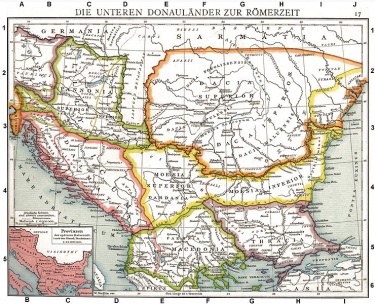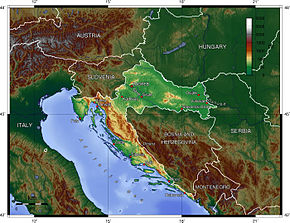Difference between revisions of "Directory:Croatia"
(tags, see also, ref) |
(added image) |
||
| Line 26: | Line 26: | ||
* [[Directory:Korcula History 2| Croatia-Korcula History No.2]] | * [[Directory:Korcula History 2| Croatia-Korcula History No.2]] | ||
==External links== | ==External links== | ||
| + | *[http://www.amazon.com/Becoming-Central-Eastern-Europe-450-1450/dp/9004186468/ref=ntt_at_ep_dpt_3/177-6862126-4437845 Becoming Slav, Becoming Croat] (East Central and Eastern Europe in the Middle Ages, 450-1450) by Dr Danijel Dzino | ||
* [http://www.vlada.hr/en Government of the Republic Croatia - Official Web Portal] | * [http://www.vlada.hr/en Government of the Republic Croatia - Official Web Portal] | ||
| − | + | ||
===Share this page=== | ===Share this page=== | ||
<sharethis /> | <sharethis /> | ||
| − | + | [[File:85px-Coat of arms of Croatia.svg.png||thumb|left|300px|Coat of arms of Croatia (Hrvatska)]] | |
| − | + | ||
| − | | | ||
| − | | | ||
| − | |||
</div> | </div> | ||
<br> | <br> | ||
Revision as of 02:31, 29 September 2011
Medieval Croatia evolved from province of the Roman Empire named Dalmatia. Roman Dalmatia was divided after the collapse of the Roman Empire between the Byzantine Empire (Eastern Roman Empire) and the Carolingian Empire (Franks). The Carolingian Empire created it’s own Dalmatian Ducatus. The Dalmatian Ducatus (Duchy) of the Carolingian Empire had mainly a Roman Latin-Illyrian population (as well as Liburnians, Greeks, Guduscani, Ostrogoths and Slavs).
With time one of the Slavic tribes within Dalmatian Ducatus became the political elite and the leaders (dux) of the province. The fore-mention Slavic political elite from the late 9th century onwards were referred to as Cruatorum. This was the first time that the Croatian identity (Hrvat) was used c. 880 AD.[1][2] Cruatorum is a Latin translation of Hrvat. During this period the Dalmatian Ducatus became independent and was renamed Ducatus Croatiae. Later it became a kingdom that was called the Regnum Chroatorum (Kingdom of Croatia 925–1102 AD).
Kingdom of Croatia
The new Kingdom of Croatia was ruled by Slavic nobility from the Dalmatian hinterland (Klis in central Dalmatia). The kingdom was named after her ruling class, which in turn ruled a medieval multi-ethnic state. The Kingdom of Croatia’s political elite seemed to be Slavs who in the past intermixed with Sarmatians as the word Hrvat is of Sarmatian origins.[3] Other than that one can only engage in historical speculation about the connections with the Sarmatians, which many have done in the past.
The Kingdom of Croatia with time became a powerful military state and expanded her borders, as well as being a Christian state then later Catholic (note: the Slavs were pagans upon arrival in Roman Dalmatia). It’s written language was Latin and Croatian Glagolitic. The Slavic part of the population spoke old Slavic Chakavian.
The medieval state borders have been a matter of huge debate and will remain so until new historical evidence is found. However there is some factual information. The river Cetina was a major border in the south. The Roman cities of Jadera (Zara/Zadar), Spalatum (Spalato/Split), Ragusa (Dubrovnik) and Trau (Trogir) with their surrounding areas never became part of the state. Other parts of the Dalmation coast did. In the north the river Sava was a major border. The region south of the river Cetina has been sometimes historically referred to as Red Croatia, which would indicate her political influence was felt beyond the river Cetina.
In the late 12 century the state fell into crisis when the neighbouring Hungarians (Magyars) used this opportunity to expand their own state. In 1102 it ceased to exist and it became politically part of the Kingdom of Hungary.
Notes and References
- ^ Becoming Slav, Becoming Croat: New approaches in research of identities in post-Roman Illyricum by Danijel Dzino
- "The first evidence of the Croat name, dux/rex Croatorum, does not appear until the ninth century. The Charter of Duke Trpimir is indeed the oldest text that mentions the Croat name, dux Chroatorum but its authenticity is disputed for good reason. The earliest certain evidence is the title dux Cruatorum from duke Branimir's inscription (c. 880), so that before this date we cannot assume with certainty that the Croat identity existed at all."
- ^ A History of the Croatian Language: by Milan Mogus (p.13)
- ^ Hrvat or Horoúathos are names of Sarmatian origins. In 1853 a Russian archaeologist Pavel Mikhailovich Leontjev discovered the Tanais Tablets. The Tanais Tablets mention three men: Horoúathos, Horoáthos, and Horóathos (Χορούαθ[ος], Χοροάθος, Χορόαθος). They are written in Greek and are from the 3rd century AD from the city of Tanais, today's Azov, Russia. At that time the region had a mixed Greek-Sarmatian population.
See also
External links
- Becoming Slav, Becoming Croat (East Central and Eastern Europe in the Middle Ages, 450-1450) by Dr Danijel Dzino
- Government of the Republic Croatia - Official Web Portal
<sharethis />



